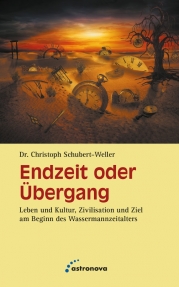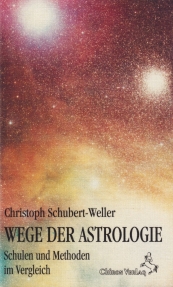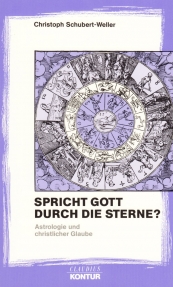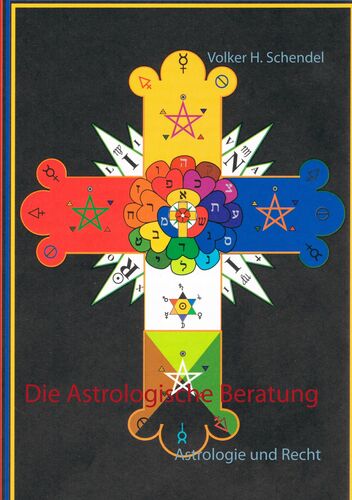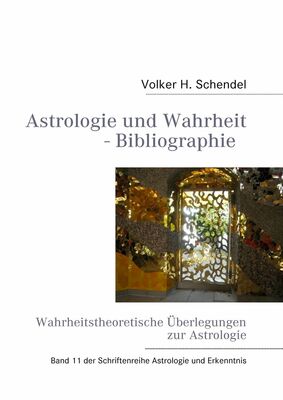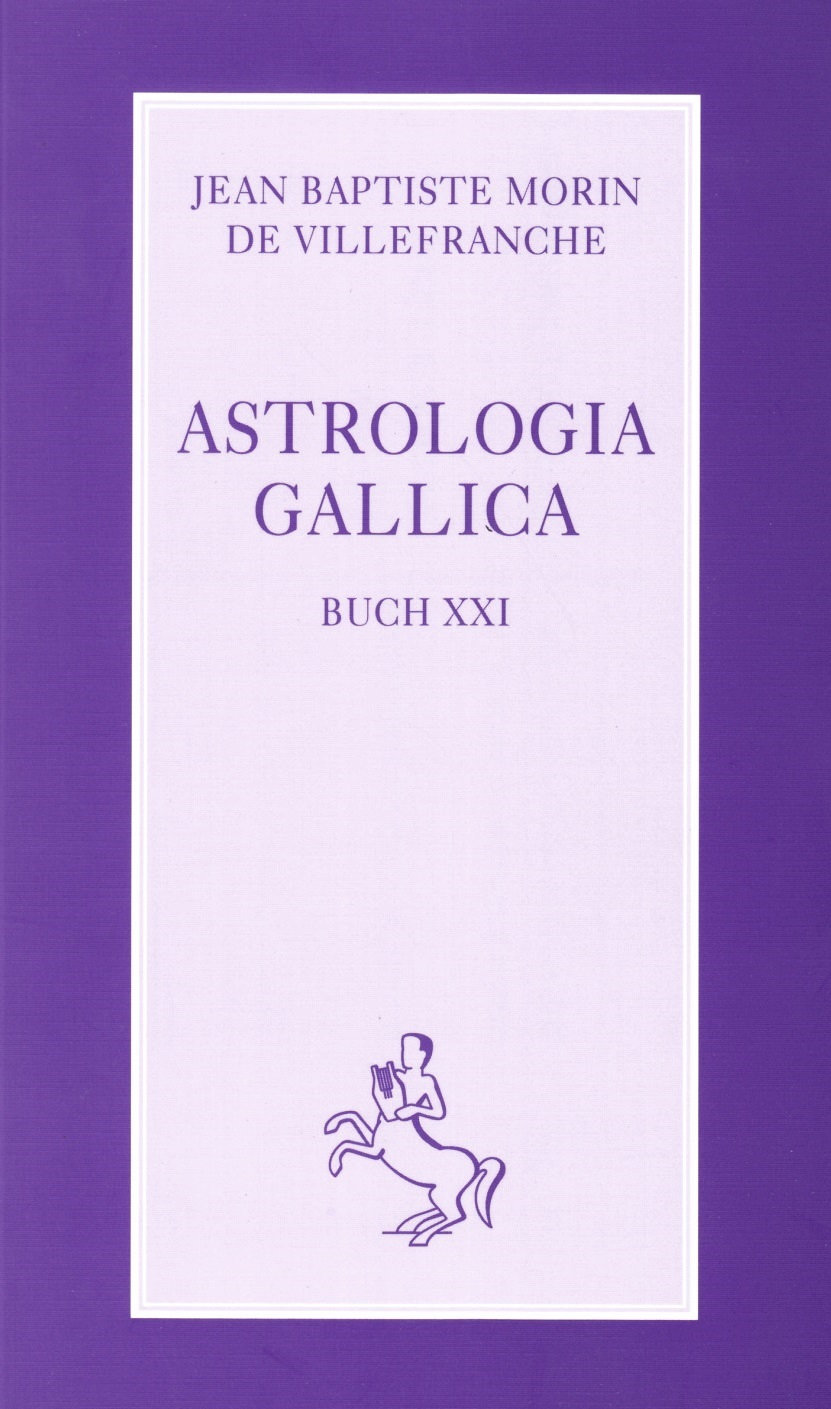Talk – https://talk.vonabisw.de/Astrotalk/Stuckrad.mp4
Bitchute – https://www.bitchute.com/channel/RLNyT9ETWzwa
Rumble – https://rumble.com/c/c-496224?e9s=src_v1_cbl
Youtube – https://www.youtube.com/@astrotalk-traditionelleast5306/videos
*****************************
Astrotalk Prof. Stuckrad Playlist –https://www.youtube.com/playlist?list=PLCKPz4q3EX-uI8ZQvBJxa-b78ImfZ31gk
*****************************
Prof. Dr. Kocku von Stuckrad ist ein deutscher Religionswissenschaftler, dessen akademischer Werdegang ihn von Bremen über Amsterdam nach Groningen führte.
Akademische Ausbildung und frühe Karriere
Geboren am 6. April 1966 in Kpando, Ghana, studierte von Stuckrad Vergleichende Religionswissenschaft, Philosophie und Judaistik an den Universitäten Bonn und Köln. 1995 schloss er sein Studium mit der Magisterprüfung ab. Von 1997 bis 1999 promovierte er an der Universität Bremen, wo er auch von 1997 bis 2002 als Dozent tätig war. 2002 habilitierte er sich an derselben Universität Kocku von Stuckrad.
Stationen in Amsterdam und Bayreuth
Im Frühjahr 2002 nahm von Stuckrad eine einjährige Gastprofessur für Religion der Gegenwart an der Universität Bayreuth auf. Anschließend war er von 2003 bis 2009 Assistenzprofessor für die Geschichte der Hermetischen Philosophie und verwandter Strömungen am Department of Art, Religion and Cultural Studies der Universität Amsterdam. In dieser Zeit trug er maßgeblich zur Etablierung der westlichen Esoterik als akademisches Forschungsfeld bei Kocku von Stuckrad.
Professur in Groningen und internationale Anerkennung
Seit 2009 ist von Stuckrad Professor für Religionswissenschaft an der Universität Groningen in den Niederlanden. Von 2013 bis 2017 war er Dekan der Fakultät für Theologie und Religionswissenschaften. Derzeit leitet er die Graduate School of Religion, Culture and Society an dieser Universität Kocku von Stuckrad.
Neben seiner Tätigkeit in Groningen wurde er 2011 zum Honorarprofessor für Religionswissenschaft an der Universität Aarhus in Dänemark ernannt Kocku von Stuckrad.
Forschungsschwerpunkte
Von Stuckrads Forschung konzentriert sich auf die europäische Religionsgeschichte, westliche Esoterik, die Verbindungen zwischen Religion, Natur und Wissenschaft sowie auf theoretische und methodologische Ansätze in der Religionswissenschaft. Er hat zahlreiche Werke veröffentlicht, darunter Bücher wie „Western Esotericism: A Brief History of Secret Knowledge“ und „A Cultural History of the Soul“
******************
The Study of Religion
The methodological development of the study of religion can be traced from Rudolf Otto and Mircea Eliade through several major shifts that transformed the discipline from an essentialist and phenomenological field into a pluralistic, cultural, and discursive one.
Rudolf Otto (1869–1937) formulated a foundational phenomenology of religion in The Idea of the Holy (1917). He argued that religion is not reducible to ethics, psychology, or sociology but arises from a distinct dimension of human experience: the numinous, characterized by the mysterium tremendum et fascinans. His approach was descriptive and phenomenological, but also normative — it assumed the reality of the transcendent as the source of religious feeling. Otto’s work represented an attempt to understand religion “from within,” emphasizing the unique quality of religious consciousness.
Mircea Eliade (1907–1986) developed Otto’s ideas into a universal phenomenology of religion. In The Sacred and the Profane (1957) and his multivolume History of Religious Ideas (1974–1985), Eliade argued that religious life is structured around manifestations of the sacred (hierophanies), which reveal a timeless, archetypal order underlying myths, symbols, and rituals. He aimed to uncover the essence of religion as humanity’s encounter with the sacred. His method was comparative and interpretive but also essentialist: he assumed that “the sacred” is a transhistorical category present in all human cultures.
Critiques and methodological turns after Eliade
From the 1960s onward, scholars began to move away from essentialism toward historical, sociological, and cultural methods.
- Sociological and functionalist approaches (Peter L. Berger, Thomas Luckmann) defined religion as a system of meaning that constructs social reality (The Social Construction of Reality, 1966).
- Structuralism and symbolic analysis (Claude Lévi-Strauss, Mary Douglas) focused on the underlying cognitive and symbolic structures of religious systems.
- Hermeneutical approaches (Paul Ricoeur, Hans-Georg Gadamer) emphasized interpretation — religion as a form of self-understanding expressed through symbols and texts.
- Post-phenomenological religious hermeneutics (Hans G. Kippenberg, Jörg Rüpke, Kocku von Stuckrad) rejected the notion of a universal “sacred” and instead viewed religion as a discursive practice — something that emerges within cultural communication and interpretation.
Since the 1990s, the field has become methodologically plural and self-reflexive.
- Cultural and discursive approaches (influenced by Michel Foucault) analyze religion as part of broader systems of knowledge and power.
- Postcolonial and gender-critical approaches (Talal Asad, Judith Butler, Saba Mahmood) question how the modern Western concept of “religion” itself was shaped by colonial and patriarchal contexts.
- Material and performative turns (Birgit Meyer, Manuel Vásquez) focus on embodied practices, media, and materiality rather than belief or doctrine.
- Cognitive approaches (Pascal Boyer, Harvey Whitehouse) study religion through universal features of human cognition and evolution.
In summary, the methodological trajectory of the study of religion evolved from a phenomenological–essentialist orientation (Otto, Eliade) to a cultural, historical, and discursive one. Where Otto and Eliade sought the timeless essence of “the sacred,” contemporary scholars analyze religion as a situated, contingent, and relational phenomenon — a product of human communication, culture, and power.
The English term “study of religion” or “religious studies” does not mean exactly the same as the German “Religionswissenschaft.” The difference lies both in intellectual history and in disciplinary orientation.
In the German tradition, Religionswissenschaft emerged in the late nineteenth century as part of the broader movement of Geisteswissenschaften (human sciences). It sought an objective, comparative, and historical study of religion distinct from theology. Scholars such as Friedrich Max Müller, Chantepie de la Saussaye, and later Rudolf Otto and Gerardus van der Leeuw defined it as a Wissenschaft, meaning a systematic science or disciplined inquiry. The term carried the ideal of objectivity, methodological rigor, and universality, much like philology or anthropology. It was conceived as a science of religion’s manifestations — myths, rituals, symbols — aiming to describe and understand them without normative judgment.
In contrast, the English term “religious studies” developed mainly in the Anglo-American university context of the 1960s and 1970s. It grew out of theology departments but became increasingly interdisciplinary, drawing on sociology, anthropology, psychology, and cultural studies. Unlike Religionswissenschaft, religious studies does not necessarily claim scientific neutrality. It is often broader, more pragmatic, and open to theoretical pluralism, including approaches that critically examine the category “religion” itself.
Thus, the key differences can be summarized as follows in conceptual terms (not as a list, but as a contrast in spirit):
Religionswissenschaft implies a scientific, systematic, and often phenomenological study of religion, rooted in the German academic ideal of the Wissenschaft des Geistes. It aims to uncover the forms, meanings, and historical development of religious phenomena.
Religious studies, by contrast, refers to a pluralistic, interdisciplinary, and often critical field that may include historical, sociological, psychological, or postcolonial perspectives. It is less tied to the idea of an autonomous “essence” of religion and more concerned with religion as a cultural and social construct.
In short: Religionswissenschaft seeks to understand religion as a phenomenon, while religious studies increasingly studies the category of “religion” itself — how it is defined, used, and shaped within societies.
The institutional and methodological development of Religionswissenschaft in the German-speaking world and religious studies in the Anglo-American context diverged significantly after their shared 19th-century roots, even though they occasionally influenced one another.
In Germany, Religionswissenschaft was established as part of the human sciences (Geisteswissenschaften), closely linked to philology, history, and philosophy. Its early institutional centers were chairs for “Allgemeine Religionsgeschichte” or “Vergleichende Religionswissenschaft” at universities such as Göttingen, Leipzig, and Berlin. Scholars like Friedrich Max Müller, though working in Oxford, had strong ties to the German philological tradition, emphasizing comparative study based on texts. Later figures such as Rudolf Otto, Nathan Söderblom, and Gerardus van der Leeuw further defined the field as descriptive, comparative, and phenomenological.
This meant that Religionswissenschaft developed with a strong historical-philological and hermeneutical orientation, concerned with meaning, symbolism, and the experiential dimension of religion. Even when sociological or psychological methods were introduced, the discipline retained the German ideal of Verstehen — interpretive understanding rather than empirical measurement. Institutional boundaries between Religionswissenschaft and theology were always delicate: in many universities, the field remained housed within theological faculties, maintaining both independence and tension with confessional studies.
In the Anglo-American world, the situation evolved differently. Until the mid-20th century, most departments dealing with religion were theological. The emergence of religious studies in the 1960s coincided with the secularization of higher education and the rise of cultural and social sciences. Universities such as Chicago, Lancaster, and Santa Barbara created departments of religious studies independent of theology.
Methodologically, this new field became interdisciplinary: it incorporated anthropology (e.g., Clifford Geertz’s interpretive anthropology of religion), sociology (Peter Berger, Bryan Wilson), psychology (William James, later cognitive science), and eventually literary and cultural theory. Rather than seeking the essence of religion, Anglo-American scholars explored how religions functioned within societies, how they constructed meaning, and how the very category of “religion” had been historically produced — a turn strongly influenced by Michel Foucault, Talal Asad, and postcolonial theory.
By the late 20th century, the two traditions reflected distinct self-understandings. In the German context, Religionswissenschaft often still referred to a historical-hermeneutical science of religion, studying religious ideas, myths, and systems as part of human culture but maintaining a scholarly distance from theology. In the Anglo-American world, religious studies became a critical, reflexive, and cultural discipline, questioning not only religions but also the scholarly and political frameworks that define them.
Today, the distinction is still visible. German Religionswissenschaft emphasizes methodological self-discipline, textual precision, and theoretical modesty — a legacy of the Wissenschaft ideal. Anglo-American religious studies favors theoretical experimentation, interdisciplinarity, and a critical stance toward the concept of “religion” itself. Yet the two traditions increasingly interact: German scholars have adopted discourse and cultural approaches, while English-speaking scholars have rediscovered the value of historical and philological depth.
In essence, Religionswissenschaft and religious studies are not two names for the same thing, but two genealogies of inquiry that meet in the shared effort to understand how humans create and interpret the sacred — one emerging from the philological and hermeneutical spirit of the Geisteswissenschaften, the other from the plural and critical ethos of the modern humanities.
Since the late 20th century, a number of influential European scholars — among them Kocku von Stuckrad, Jörg Rüpke, and Hans G. Kippenberg — have sought to reconcile the historical-hermeneutical tradition of Religionswissenschaft with the critical and discursive impulses of Anglo-American religious studies. Their work represents a third phase in the methodological evolution of the field: one that both respects the discipline’s classical roots and transforms them through cultural and theoretical critique.
Kocku von Stuckrad (University of Groningen)
Kocku von Stuckrad (University of Groningen) has been central to this transformation. He argues that both Religionswissenschaft and religious studies have historically operated with an implicit assumption of what “religion” is — often as something separate from culture, science, or politics. Drawing on Michel Foucault’s discourse theory, von Stuckrad reconceives religion as a discourse of knowledge: a way of talking about transcendence, order, and the boundaries of the human. His major works, such as Discursive Study of Religion (2013) and A Cultural History of the Soul (2022), show how religious language participates in broader cultural systems of meaning and power. This marks a shift from studying “religion as an object” to analyzing “religion as a category of communication.”
Jörg Rüpke (Erfurt) advances a complementary approach, especially in his Religious Individualization in Historical Perspective and Pantheon: A New History of Roman Religion. For Rüpke, religion is best understood as a practice of meaning-making, historically situated and always negotiated by individuals within social frameworks. He emphasizes agency, ritual practice, and everyday religion — concepts that move beyond both Otto’s essentialism and the purely structural models of mid-century sociology. Rüpke’s “practice turn” integrates insights from anthropology, sociology, and historical philology, showing that religion is produced through what people do, not only what they believe.
Hans G. Kippenberg has played a bridging role between classical Religionswissenschaft and modern social theory. Influenced by Max Weber, Pierre Bourdieu, and Niklas Luhmann, he conceives religion as a social subsystem that constructs meaning and legitimacy within specific cultural contexts. His works — such as Religionswissenschaft in der Moderne and Discovering Religious History in the Modern Age (with Stuckrad) — emphasize the reflexive turn: the recognition that scholars of religion are themselves part of the cultural processes they study.
Together, these scholars represent what might be called the discursive-cultural turn in European Religionswissenschaft. It neither returns to Eliade’s universalism nor fully adopts Anglo-American postmodern pluralism. Instead, it treats religion as a dynamic field of communication, practice, and power. In this framework, “the sacred” is no longer a timeless essence but a cultural strategy through which societies negotiate identity, authority, and transcendence.
Thus, contemporary European Religionswissenschaft — shaped by figures like von Stuckrad, Rüpke, and Kippenberg — serves as a bridge between traditions. It preserves the historical depth and hermeneutical care of the German model, while embracing the theoretical innovation and critical reflexivity of the Anglo-American one. The result is a discipline that no longer seeks to define what religion is, but rather to understand how and why “religion” is made meaningful in human history and culture.
.
************************************
Zarte Empirie (Goethe)
Zarte Empirie (Goethe) – Neoromantischer Wissenschaftler – “delicate empiricism” – A “Neo-Romantic scientist” who follows this approach would be someone who blends scientific rigor with aesthetic, intuitive, and holistic sensitivity — a researcher who sees nature as a living, dynamic organism rather than as a machine. Such a thinker aims not just to measure or categorize phenomena but to enter into a relationship with them, to understand their inner form and essence through empathetic observation.
Knowledge as a Relational Event
The phrase “Wissen als relationales Geschehen” can be translated as “knowledge as a relational event” or “knowledge as a relational process.”
It expresses a view of knowledge not as something static, stored in the mind or in texts, but as something that happens — an ongoing event that arises within relationships: between subject and object, between observer and observed, between humans and the world.
In this perspective, knowing is not the act of a detached observer collecting facts, but a living interaction. Knowledge emerges through relation, through the dialogue between consciousness and phenomena.
This idea aligns closely with Goethe’s “zarte Empirie”, phenomenology (especially Husserl and Merleau-Ponty), and later relational philosophies of science. It emphasizes that reality reveals itself differently depending on how we approach it — that to know something is to be in a participatory relationship with it.
In short:
Knowledge as a relational event means that truth is not discovered from the outside but co-created through the meeting of perceiver and world
Object-Oriented Ontology (OOO) is a contemporary philosophical movement, mainly associated with thinkers like Graham Harman, that radically rethinks the nature of objects and reality. At its core, OOO asserts that objects exist independently of human perception and are not reducible to their relations, uses, or effects on us.
*****************************
Der berufliche Weg von Bremen über Amsterdam nach Groningen
Wissenschaftstheoretische und insbesondere Diskurstheoretische Kontexte an den Beispielen von:
MA – Frömmigkeit und Wissenschaft: Astrologie in Tanach, Qumran und frührabbinischer Literatur (Europäische Hochschulschriften XXIII/572). Frankfurt a. M. etc.: Peter Lang 1996. 220 pp.

PhD – Das Ringen um die Astrologie: Jüdische und christliche Beiträge zum antiken Zeitverständnis (Religionsgeschichtliche Versuche und Vorarbeiten 49). Berlin & New York: Walter de Gruyter 2000. XVII, 912 pp.

https://astronova.de/das-ringen-um-die-astrologie.html

–
Die Habilitationsschrift „Schamanismus und Esoterik: Kultur- und wissenschaftsgeschichtliche Betrachtungen (Gnostica: Texts and Interpretations 4). Leuven: Peeters 2003. VII, 337 pp.“

Divination in einer Astrologischen Beratung

Das kosmologische und philosophische Weltbild und Veränderungen über die Zeit
Wahrnehmung von politischen Notwendigkeiten
Aktuelle wissenschaftliche Aktivitäten
****************************
Western Esotericism: A Brief History of Secret Knowledge (Religion in Culture: Studies in Social Contest and Construct)

–
A Cultural History of the Soul: Europe and North America from 1870 to the Present

–
Nach der Ausbeutung: Wie unser Verhältnis zur Erde gelingen kann

–
The Scientification of Religion: An Historical Study of Discursive Change, 1800–2000

–
Was ist Esoterik: Kleine Geschichte des geheimen Wissens –

–
Geschichte der Astrologie: Von den Anfängen bis zur Gegenwart – https://astronova.de/geschichte-der-astrologie-1274.html

–
Lilith
Im Lichte des schwarzen Mondes zur Kraft der Göttin – https://astronova.de/lilith-1102.html

****************************
10.03.2025 – Anomalistik Podcast #38: Relationale Wende – Die Trennung von Geist und Materie überwinden – https://www.anomalistik.de/aktuell/anomalistik-podcast/anomalistik-podcast-38-relationalewende
***************************
Universität Amsterdam – Geschichte der hermetischen Philosophie und verwandter Strömungen – Prof. Dr. Wouter J. Hanegraaff – https://astrologien.vonabisw.de/astrologien/universitaet-amsterdam-geschichte-der-hermetischen-philosophie-und-verwandter-stroemungen-prof-dr-wouter-j-hanegraaff
************************
Center for Applied Ecological Thinking
Homepage – https://cape.ku.dk/eng
***************************************
Publications
https://www.kockuvonstuckrad.com/publications
ASTROLOGY – Kocku von Stuckrad –https://pure.rug.nl/ws/portalfiles/portal/697946852/astrology.pdf –
**********************
*6. April 1966 – Kpando, Ghana – Abitur und Studium
*************************************
Dozententätigkeit / Wiss. Mitarbeiter im Fach Religionswissenschaft in den Jahren 1997 bis 2002 an der Universität Bremen – in dieser Zeit war Prof. Dr. theol. Hans G. Kippenberg Lehrstuhlinhaber für Religionswissenschaft mit dem Schwerpunkt „Geschichte und Theorie der Religionen“. – https://www.uni-bremen.de/religionswissenschaft/personen
Homepage – https://www.kockuvonstuckrad.com/bio/?utm_source=chatgpt.com – https://www.rug.nl/staff/c.k.m.von.stuckrad
Astrotalk Prof. Stuckrad Playlist – https://www.youtube.com/playlist?list=PLCKPz4q3EX-uI8ZQvBJxa-b78ImfZ31gk
**************************************
Horoscopes and Public Spheres
Horoscopes and Public Spheres: Essays on the History of Astrology (De Gruyter, 2005) – https://www.degruyterbrill.com/document/doi/10.1515/9783110925128/html?srsltid=AfmBOooymtCW8n_pQffS5YUF1KKPfkwKFp28R8DXQ6SlD3rgYZK31GO2 –

Introduction: Horoscopes and History
GÜNTHER OESTMANN, H. DARREL RUTKIN und KOCKU VON STUCKRAD – Part I: Horoscopes and the Public Sphere in Antiquity – Sulla’s Horoscope? (Firm. math. 6,31,1) – WOLFGANG HÜBNER – What Was Agrippina Waiting For? (Tacitus, Ann. XII, 68-69) – JOSÈPHE-HENRIETTE ABRY – The Emperor Hadrian in the Horoscopes of Antigonus of Nicaea – – STEPHAN HEILEN – The Possible Survival of Babylonian Astrology in the Fifth Century CE: A Discussion of Historical Sources – NICHOLAS CAMPION – Part II: Medieval Astrology: Muslim and Jewish Discourse – Māshā’allāh’s Zoroastrian Historical Astrology – DAVID PINGREE – Circular Motions: Private Pleasure and Public Prognostication in the Nativities of the Mughal Emperor Akbar – EVA ORTHMANN – The Horoscope of Iskandar Sultan as a Cosmological Vision in the Islamic World – ANNA CAIOZZO – Historical Horoscopes of Israel: Abraham bar Ḥiyya, Abraham ibn Ezra, and Yosef ben Eliezer – – JOSEFINA RODRíGUEZ-ARRIBAS – Part III: The Use of Horoscopes in Renaissance and Early Modern Europe – Various Uses of Horoscopes: Astrological Practices in Early Modern Europe – H. DARREL RUTKIN – Reading Health in the Stars: Politics and Medical Astrology in Renaissance Milan – MONICA AZZOLINI – Evidence and Conjecture in Cardano’s Horoscope Collections – STEVEN VANDEN BROECKE – The Function of Horoscopes in Biographical Narrative: Cardano and After – KOCKU VON STUCKRAD – J. W. A. Pfaff and the Rediscovery of Astrology in the Age of Romanticism – GÜNTHER OESTMANN
Biography & Academic Career
Director of the Graduate School of Religion, Culture and Society at the University of Groningen since September 2023 Kocku von Stuckrad. – The Graduate School of Religion, Culture and Society
The Graduate School of Religion, Culture and Society (GSRCS) is the central hub for PhD research and advanced graduate education in Religious Studies at Groningen. It integrates interdisciplinary perspectives and connects research to wider societal themes.
- Focus Areas:
- Religion and culture in historical and contemporary contexts
- Intersections of religion with philosophy, science, politics, law, and the arts
- Diversity, inclusion, and pluralism in global and European contexts
- Societal impact of religion in relation to sustainability and social cohesion
- Programs:
- Offers supervision and training for PhD candidates in Religious Studies, Cultural Studies, and interdisciplinary projects
- Provides graduate-level research seminars, workshops, and advanced methods training
- Prepares candidates for both academic careers and non-academic professional contexts (policy, cultural institutions, NGOs, education, etc.)
Responsibilities of the Director
As Director, von Stuckrad oversees the strategic, academic, and administrative direction of the Graduate School. His responsibilities include:
Strengthening international networks and collaborations with other institutions.
Academic Leadership
Shaping the research agenda of the school, aligned with both faculty strengths and university-wide priorities (e.g., “Sustainable Society”).
Ensuring that the school’s programs are internationally competitive and interdisciplinary.
PhD Supervision and Quality Assurance
Overseeing PhD admissions, supervision quality, and graduate progress.
Coordinating supervisory teams across disciplines and departments.
Graduate Training and Curriculum Development
Designing and monitoring advanced courses, research seminars, and transferable skills training.
Encouraging interdisciplinary collaboration between theology, humanities, social sciences, and law.
Institutional and International Representation
Acting as the school’s representative in university-wide graduate research councils.
Broader Career Context
- Dean of the Faculty of Theology and Religious Studies (2013–2017) – built experience in managing research, education, and faculty governance.
- Chair of interfaculty program “Diversity, Inclusion and Pluralism” – integrated societal themes into university research.
- Visiting Professor at Sciences Po Paris (2022) – reinforced international scope before assuming the GSRCS directorship.
- Since 2009 – Professor of Religious Studies, University of Groningen, The Netherlands.
Research areas: European history of religion, Western esotericism, the relationship between religion, nature, and science, and methodological and theoretical approaches in the study of religion. - 2003–2009 – Universitair Docent (Assistant Professor), University of Amsterdam, at the Center for the History of Hermetic Philosophy and Related Currents. Served on the executive board for graduate program reform and chaired the departmental assembly in religious studies. – (tenured)
- 2002–2003 – Visiting Professor of Contemporary Religion, University of Bayreuth.
- Before 2002 – Research and teaching in Germany with a focus on the cultural history of astrology, Jewish and Christian contributions to concepts of time in antiquity, and the history of esoteric traditions.
Between 2003 and 2009, Kocku von Stuckrad served as an Assistant Professor (Universitair Docent) at the University of Amsterdam, specifically within the Centre for the History of Hermetic Philosophy and Related Currents (HHP). This period marked a significant phase in his academic career, during which he contributed to the establishment of Western esotericism as a recognized field of scholarly research. – https://www.amsterdamhermetica.nl – The HHP Centre, founded in 1999, is renowned as the world’s leading institution for academic research and teaching in the field of esotericism, offering comprehensive programs from Bachelor’s to PhD levels. Under von Stuckrad’s tenure, the centre solidified its position as a pivotal hub for the academic study of esoteric traditions, spanning from Mediterranean antiquity through the medieval period, the Renaissance, and into modern times. The HHP Centre remains the only institution globally providing a complete academic study program in the history of esotericism .
Since 2009 Kocku von Stuckrad helds a tenured full professorship in Religious Studies at the University of Groningen, Netherlands. His tenure there is marked by significant leadership roles and contributions to the academic study of religion. – Academic Roles at the University of Groningen. – His current position is Director of the Graduate School of Religion, Culture and Society at the university.
Director of the Graduate School of Religion, Culture and Society
Since September 2023, von Stuckrad has been serving as the Director of the Graduate School. This role involves overseeing graduate-level education and research in the fields of religion, culture, and society, ensuring the integration of interdisciplinary approaches and fostering academic excellence.
Full Professor of Religious Studies
Since September 2009, von Stuckrad has been a full professor in the Faculty of Theology and Religious Studies. His research focuses on the European history of religion, the history of science, and philosophy in Europe and North America. He has published extensively on these topics and has been a prominent figure in the academic study of religion.
Dean of the Faculty of Theology and Religious Studies
From September 2013 to August 2017, von Stuckrad served as the Dean of the Faculty. In this capacity, he was responsible for overseeing the faculty’s academic and administrative functions, including research and education strategies. He chaired the Faculty Board and directed the Groningen Centre for Religious Studies. Additionally, he led the inter-faculty research program „Diversity, Inclusion and Pluralism“ within the university’s „Sustainable Society“ focus area.
Honorary Professor at Aarhus University, Denmark
In 2011, von Stuckrad was appointed as an Honorary Professor of the Study of Religion at Aarhus University. This position reflects his recognition and contributions to the field of religious studies beyond the University of Groningen.
Guest Professorship at Sciences Po Paris
From January to April 2022, von Stuckrad held a guest professorship at the Chair for the Study of Religion, Center for International Studies of Sciences Po Paris (CERI-CNRS-Sciences Po), in cooperation with the Paris School of International Affairs (PSIA). This role involved delivering lectures and engaging in research collaborations in the field of religious studies.
Von Stuckrad’s research interests lie in the discursive structures that attribute meaning to and produce knowledge about „religion“ in changing historical settings. He examines how religion’s cultural meaning and impact are shaped by interactions with other societal domains, particularly philosophy, science, art and literature, law, and politics.
Academic Degrees & Education
2002–2003: Visiting professor, chair of Contemporary Religion, at the University of Bayreuth
2001–2003: Post-doctoral research project “The Formation of Shamanic Discourses in Religious Studies and Esotericism,” funded by the German Research Foundation DFG, University of Bremen
2000–2001: Academic administrator for the application phase of a Collaborative Research Center (SFB) devoted to “Religious Pluralism in Europe,” Universities of Erfurt and Bremen
1999–2000: Postdoctoral faculty, Department of Religious Studies (Cultural History of European Polytheisms/Comparative Religion), University of Erfurt
1996–2003: Adjunct Lecturer for Religious Studies at the University of Bremen
Master’s (M.A.) – 1995
- Fields: Religious Studies, Philosophy, and Jewish Studies
- Institutions: University of Bonn and University of Cologne
- Honors: Graduated summa cum laude (“with distinction”)
Kocku von StuckradWikipedia
Doctorate (PhD) – Dr. phil. – 1999
- Field: Religious Studies, University of Bremen
- Honor: Summa cum laude
- Dissertation: Das Ringen um die Astrologie: Jüdische und christliche Beiträge zum antiken Zeitverständnis, which explores the role of astrology in ancient Jewish and Christian contexts, focusing on concepts of time and contested knowledge in antiquity.
Kocku von Stuckrad+1WikipediaWikidata – He completed the PhD within the doctoral program in Religious Studies at the University of Bremen from 1996 to 1999, supported by a doctoral fellowship. - Kocku von Stuckrad
- Additionally, between 1998 and 1999, he was a visiting doctoral student at the Max Weber Center for Advanced Cultural and Social Studies, University of Erfurt.
- Kocku von Stuckrad
Habilitation – 2002
- Institution: University of Bremen
- Qualification: Venia legendi—that is, his formal authorization to teach University-level Religious Studies at professorial rank
Kocku von StuckradWikipedia - The work forming the basis of his Habilitation is associated with his expanded study on shamanism and esoteric traditions: Schamanismus und Esoterik: Kultur- und wissenschaftsgeschichtliche Betrachtungen (2003) – The title of Kocku von Stuckrad’s Habilitation thesis at the University of Bremen (2002) was:
- Schamanismus und Esoterik: Kultur- und wissenschaftsgeschichtliche Betrachtungen
- (Shamanism and Esotericism: Cultural and History-of-Science Perspectives)
- It was later published as a monograph in 2003 (Leiden/Boston: Brill).
- This work expanded on his discourse-historical method, analyzing how concepts like “shamanism” and “esotericism” were constructed in European cultural and academic contexts, and it marked his transition into a leading figure in the study of Western esotericism.
WikipediaWikidata – The discourse-historical method is central to Kocku von Stuckrad’s scholarship, and understanding it helps to see why he has been so influential in Religious Studies. Here’s a clear breakdown:
What is the Discourse-Historical Method?
It is an approach to the study of religion that treats “religion” not as a timeless essence or fixed category, but as something produced, negotiated, and transformed through discourse.
By “discourse,” von Stuckrad (drawing on Michel Foucault’s discourse theory) means all the ways in which knowledge is expressed, structured, and made authoritative: in texts, practices, institutions, and power relations.
The historical part stresses that discourses are always embedded in specific times, places, and cultural settings. They change across history and carry traces of earlier layers of meaning.
Core Principles in von Stuckrad’s Method
Religion as a Discourse, Not a Substance
Instead of asking “What is religion really?” he asks “How do people in different times and contexts talk about and construct something they call religion?”
Knowledge Production
He investigates how ideas about religion intersect with science, philosophy, politics, and law, and how certain knowledge is legitimized or marginalized.
Historical Layering
Every discourse is historically layered: for example, concepts like “gnosis,” “shamanism,” or “esotericism” are not timeless truths, but have histories shaped by cultural conflicts and scholarly traditions.
Power and Exclusion
Following Foucault, he emphasizes that discourses are not neutral; they produce boundaries of inclusion/exclusion (orthodoxy vs. heresy, science vs. superstition, “religion” vs. “magic”).
Comparative Without Essentialism
Instead of assuming universal features of religion, the method compares how different discursive formations talk about “religion.”
- 1999 – PhD (Dr. phil.) in Religious Studies, University of Bremen — summa cum laude.
- 1996–1999 – Doctoral program in Religious Studies, University of Bremen,
with a doctoral scholarship. - 1998–1999 – Visiting doctoral student at the Max Weber Center for Advanced Cultural and Social Studies, University of Erfurt.
- Undergraduate & Graduate Studies – Religious Studies, Philosophy, and Jewish Studies at the Universities of Bonn, Cologne, and Bremen.
Monographs
- Frömmigkeit und Wissenschaft: Astrologie in Tanach, Qumran und frührabbinischer Literatur (1996)
Piety and Science: Astrology in the Tanach, Qumran, and Early Rabbinic Literature. - Das Ringen um die Astrologie: Jüdische und christliche Beiträge zum antiken Zeitverständnis (2000)
The Struggle over Astrology: Jewish and Christian Contributions to Ancient Concepts of Time. - Einführung in die Religionswissenschaft: Gegenstände und Begriffe (with Hans G. Kippenberg, 2003)
Introduction to the Study of Religion: Topics and Concepts. - Schamanismus und Esoterik: Kultur- und wissenschaftsgeschichtliche Betrachtungen (2003)
Shamanism and Esotericism: Cultural and Historical Perspectives. - Geschichte der Astrologie: Von den Anfängen bis zur Gegenwart (2003; revised edition 2007)
History of Astrology: From the Beginnings to the Present. - Was ist Esoterik? Kleine Geschichte des geheimen Wissens (2004)
What is Esotericism? A Brief History of Secret Knowledge. - Western Esotericism: A Brief History of Secret Knowledge (2005)
Western Esotericism: A Brief History of Secret Knowledge. - Zo zijn we niet getrouwd‘: religie, natuurwetenschap en de radicalisering van de moderniteit (2010)
So We’re Not Married: Religion, Natural Science, and the Radicalization of Modernity. - Locations of Knowledge in Medieval and Early Modern Europe: Esoteric Discourse and Western Identities (2010)
Locations of Knowledge in Medieval and Early Modern Europe: Esoteric Discourse and Western Identities. - The Scientification of Religion: An Historical Study of Discursive Change, 1800–2000 (2014)
The Scientification of Religion: An Historical Study of Discursive Change, 1800–2000. - Die Seele im 20. Jahrhundert: Eine Kulturgeschichte (2019)
The Soul in the 20th Century: A Cultural History. - A Cultural History of the Soul: Europe and North America from 1870 to the Present (2022)
A Cultural History of the Soul: Europe and North America from 1870 to the Present. - Nach der Ausbeutung: Wie unser Verhältnis zur Erde gelingen kann (2024)
After Exploitation: How Our Relationship with the Earth Can Succeed.
Edited Volumes
- The Brill Dictionary of Religion (2006)
The Brill Dictionary of Religion. - Religion in Cultural Discourse: Essays in Honor of Hans G. Kippenberg (2004)
Religion in Cultural Discourse: Essays in Honor of Hans G. Kippenberg. - Polemical Encounters: Esoteric Discourse and Its Others (2007)
Polemical Encounters: Esoteric Discourse and Its Others. - Kabbalah and Modernity: Interpretations, Transformations, Adaptations (2010)
Kabbalah and Modernity: Interpretations, Transformations, Adaptations. - Horoscopes and Public Spheres: Essays on the History of Astrology (2005)
Horoscopes and Public Spheres: Essays on the History of Astrology. - The Brill Dictionary of Religion: Volumes I–IV (2006)
The Brill Dictionary of Religion: Volumes I–IV. - From Discussion to Experience: Religious Studies at the University of Amsterdam (2009)
From Discussion to Experience: Religious Studies at the University of Amsterdam. - Religion in Cultural Discourse: Essays in Honor of Hans G. Kippenberg (2004)
Religion in Cultural Discourse: Essays in Honor of Hans G. Kippenberg. - European Religious History (2009)
European Religious History.
Selected Journal Articles
- „Situated Knowledges and Diffractional Definitions of Esotericism“ (July 2024)
Situated Knowledges and Diffractional Definitions of Esotericism. - „Decentering Humanism in Philosophy and the Sciences: Ecologies of Agency, Subversive Animism, and Diffractional Knowledge“ (December 2023)
Decentering Humanism in Philosophy and the Sciences: Ecologies of Agency, Subversive Animism, and Diffractional Knowledge.
Wolfgang Döbereiner was a prominent German astrologer who developed the “Münchner Rhythmenlehre” and trained many astrology students through his school in Munich Wikipediaastromind.deastrologie
***********************
Key Non-Academic Roles and Organizations
- Co-Founder and Co-Director of Counterpoint: Navigating Knowledge (since 2018): This is an independent, global research center and information hub co-founded with Whitney A. Bauman. It focuses on integrating diverse knowledge systems (academic and non-academic) to address ecological, economic, political, and social challenges. Activities include hosting events, publishing policy papers, reports, blog posts (e.g., von Stuckrad’s contributions like „Doggerland Entanglements“), and producing art and fiction to foster planetary community dialogue. The center emphasizes non-academic forms of knowledge, such as ritual and creative expression.
- Associate Member of the Board of Directors, Mensch Umwelt Tierschutz – Tierschutzpartei (Animal Protection Party) (since November 2024): He serves in this capacity for the federal state of Berlin, indicating involvement in political advocacy related to animal welfare, environmental protection, and human-animal relations.
Media and Public Engagements
Von Stuckrad regularly appears as an expert in leading newspapers and other media outlets, discussing topics like religion, esotericism, animism, and the human-nature relationship. Examples include:
- Interviews and podcasts, such as on the Secret History of Western Esotericism Podcast (SHWEP) covering Western esotericism and monotheist astrologies.
- YouTube talks, including „The Relational Turn and the Study of Religion“ and „European Animisms Today.“
- Conversations in non-academic forums, like with Teya Brooks Pribac on animal studies and knowledge navigation.
- Contributions to public radio and online platforms, such as discussions on overcoming human-nature separation and the scientification of religion.
His books, such as A Cultural History of the Soul: Europe and North America from 1870 to the Present and Western Esotericism: A Brief History of Secret Knowledge, often appeal to general audiences interested in cultural history, spirituality, and environmental themes, extending beyond strictly academic readership.
**********************
The Secret History of Western Esotericism Podcast (SHWEP) is a scholarly audio series hosted by Earl Fontainelle, exploring the historical and philosophical dimensions of Western esoteric traditions, including topics like Hermeticism, Kabbalah, alchemy, and astrology. It draws on academic research to provide in-depth, chronological analyses, often featuring expert interviews.
Regarding Prof. Dr. Kocku von Stuckrad’s contributions, he has appeared as a guest on the podcast to discuss Western esotericism broadly as well as specific themes like monotheist astrologies (e.g., astrological practices within Jewish, Christian, and Islamic contexts in late antiquity). Key episodes include:
- Kocku von Stuckrad on Western Esotericism: A methodological discussion on esotericism as an „order of knowledge,“ its historical development, and academic challenges in studying it. This episode serves as an introduction to the field and references von Stuckrad’s extensive publications.
- Monotheist Astrologies in (Late) Antiquity: A conversation focusing on the integration of astrology in monotheistic religions during antiquity, including its discursive and cultural roles. Recorded on March 30, 2023.
- Link: Available via the podcast’s main site (search for the episode title) or von Stuckrad’s publications page: https://www.kockuvonstuckrad.com/publications/ (under media appearances).
The podcast is available on platforms like Spotify, Apple Podcasts, and the official website (shwep.net), where episodes can be streamed or downloaded for free. For a full archive, visit https://shwep.net/.
****************************
Religionswissenschaft in Deutschland im Jahr 1995
Im Jahr 1995 war die Religionswissenschaft in Deutschland ein etabliertes akademisches Fach, das an zahlreichen Universitäten angeboten wurde, häufig in den Fakultäten für Philosophie, Theologie oder Kulturwissenschaften. Die folgende Übersicht listet die relevanten Standorte mit institutioneller Einbindung und den Lehrstuhlinhabern jener Zeit auf. Sie basiert auf verifizierten historischen Daten und umfasst sowohl etablierte als auch interdisziplinäre Programme.
Universität Bayreuth Lehrstuhl: Religionswissenschaft I, Kulturwissenschaftliche Fakultät Lehrstuhlinhaber: Prof. Dr. Ulrich Berner Forschung: Religionsgeschichte, Theorie der Religion, Vergleichende Studien
Freie Universität Berlin Institut: Institut für Religionswissenschaft, Fachbereich Geschichts- und Kulturwissenschaften Lehrstuhlinhaber: Prof. Dr. Klaus Heinrich Forschung: Religionsphilosophie, Mythentheorie, Psychoanalytische Religionsdeutung
Ruhr-Universität Bochum Institut: Zentrum für Religionswissenschaftliche Studien (Vorgänger des CERES) Lehrstuhlinhaber: Prof. Dr. Hans G. Kippenberg Forschung: Moderne Religionsgeschichte, Religionssoziologie, Islamwissenschaft
Universität Bonn Institut: Abteilung für Religionswissenschaft, Institut für Orient- und Asienwissenschaften Lehrstuhlinhaber: Interdisziplinär, mit Fokus auf Islamwissenschaft (kein fester RW-Inhaber) Forschung: Islamkunde, Vergleichende Religionsgeschichte
Universität Bremen Institut: Interkulturelle Theologie und Religionswissenschaft, Fachbereich 9 (Kulturwissenschaften) Lehrstuhlinhaber: Interdisziplinär (kein fester RW-Lehrstuhl) Forschung: Neue Religiöse Bewegungen, Religionspädagogik
Universität Erfurt Seminar: Religionswissenschaft, Philosophische Fakultät Lehrstuhlinhaber: Interdisziplinär (vakant oder interdisziplinär) Forschung: Orthodoxes Christentum, Kulturgeschichte des Ostens
Goethe-Universität Frankfurt am Main Fachgebiet: Religionswissenschaft, Fachbereich Gesellschaftswissenschaften Lehrstuhlinhaber: Prof. Dr. Brigitte Luchesi (bis 1995), danach vakant Forschung: Religionssoziologie, Vergleichende Religionswissenschaft
Universität Freiburg (Albert-Ludwigs-Universität) Lehrstuhl: Religionswissenschaft, Theologische Fakultät Lehrstuhlinhaber: Prof. Dr. Hubert Cancik Forschung: Religionsgeschichte, Antike Religionen
Georg-August-Universität Göttingen Institut: Religionswissenschaft, Theologische Fakultät Lehrstuhlinhaber: Prof. Dr. Theo Sundermeier (bis 1995) Forschung: Vergleichende Religionswissenschaft, Religion und Medien
Universität Hamburg Institut: Missions-, Ökumene- und Religionswissenschaft, Theologische Fakultät Lehrstuhlinhaber: Interdisziplinär (Gastdozenten wie Prof. Dr. Jan Platvoet) Forschung: Missionsgeschichte, Ökumene, Weltreligionen
Martin-Luther-Universität Halle-Wittenberg Seminar: Religionswissenschaft und Interkulturelle Theologie, Theologische Fakultät Lehrstuhlinhaber: Prof. Dr. Kurt Rudolph (bis 1995) Forschung: Religionssystematik, Spätantike Religionen
Leibniz Universität Hannover Institut: Religionswissenschaft, Fakultät für Geschichte, Philosophie und Sozialwissenschaften Lehrstuhlinhaber: Prof. Dr. Peter Antes Forschung: Vergleichende Religionswissenschaft, Islamkunde, Fachdidaktik Werte und Normen
Ruprecht-Karls-Universität Heidelberg Institut: Religionswissenschaft, Philosophische Fakultät Lehrstuhlinhaber: Prof. Dr. Tilman Frick (bis 1995) Forschung: Ritualtheorie, Religionsphilosophie, Symbolforschung
Friedrich-Schiller-Universität Jena Lehrstuhl: Religionswissenschaft, Philosophische Fakultät Lehrstuhlinhaber: Interdisziplinär (Kirchenhistorischer Fokus) Forschung: Kirchengeschichte, Vergleichende Religionsgeschichte
Universität Leipzig Institut: Religionswissenschaftliches Institut, Fakultät für Geschichte, Kunst- und Orientwissenschaften Lehrstuhlinhaber: Prof. Dr. Hubert Seiwert Forschung: Religionssoziologie, Religionsgeschichte des Ostens, Empirische Religionsforschung
Philipps-Universität Marburg Institut: Fachgebiet Religionswissenschaft, Fachbereich Gesellschaftswissenschaften Lehrstuhlinhaber: Prof. Dr. Rainer Flasche Forschung: Religionsgeschichte, Mythologie
Ludwig-Maximilians-Universität München (LMU) Programm: Interfakultäres Studienprogramm Religionswissenschaft, Philosophische Fakultät Lehrstuhlinhaber: Interdisziplinär (Theologischer Fokus) Forschung: Religionsphilosophie, Theologie und Wissenschaft
Universität der Bundeswehr München Professur: Religionswissenschaft mit Schwerpunkt Islam Lehrstuhlinhaber: Interdisziplinär (nicht etabliert 1995) Forschung: Islamwissenschaft, Religion und Gesellschaft
Westfälische Wilhelms-Universität Münster Institut: Seminar für Religionswissenschaft und Interkulturelle Theologie, Katholisch-Theologische Fakultät Lehrstuhlinhaber: Prof. Dr. Heinz-Gerhard Senger (interdisziplinär) Forschung: Systematische Theologie, Religionsgeschichte, Interreligiöse Studien
Universität Potsdam Institut: Religionswissenschaft, Philosophische Fakultät Lehrstuhlinhaber: Interdisziplinär (Philologischer Fokus) Forschung: Religionsgeschichte der Antike, Ritualforschung
Universität Rostock Fachgebiet: Religionswissenschaft und Interkulturelle Theologie, Theologische Fakultät Lehrstuhlinhaber: Prof. Dr. Klaus Hock Forschung: Interkulturelle Theologie, Afrika-Religionsforschung
Eberhard Karls Universität Tübingen Institut: Religionswissenschaft, Evangelisch-Theologische Fakultät Lehrstuhlinhaber: Prof. Dr. Burkhard Gladigow Forschung: Religionshistorie, Theoriebildung der Religionswissenschaft
Zusätzliche Standorte Universität zu Köln Seminar: Religionswissenschaft, Philosophische Fakultät Lehrstuhlinhaber: Prof. Dr. Michael Pye (bis 1995) Forschung: Vergleichende Religionswissenschaft, Japan-Religionen
Johannes Gutenberg-Universität Mainz Lehrstuhl: Religionswissenschaft/Missionswissenschaft Lehrstuhlinhaber: Andreas Grünschloß (Dozent ab 1995) Forschung: Religion und Moderne
Julius-Maximilians-Universität Würzburg Abteilung: Religionswissenschaft, Theologische Fakultät Lehrstuhlinhaber: Prof. Dr. Wolfgang Völkl Forschung: Antike Religionen und Christentum
Diese Darstellung umfasst die institutionell vertretenen Standorte der Religionswissenschaft in Deutschland 1995, mit Fokus auf etablierte Lehrstühle und interdisziplinäre Einbindungen.
********************************
2007 Niederlande
Religionswissenschaft in den Niederlanden im Jahr 2007
Im Jahr 2007 war die Religionswissenschaft (Religiewetenschappen) in den Niederlanden ein etabliertes akademisches Fach, das an mehreren Universitäten angeboten wurde, oft in Verbindung mit Theologie in den Fakultäten für Geisteswissenschaften, Philosophie oder Theologie. Die Programme waren häufig interdisziplinär und umfassten vergleichende Ansätze zu Weltreligionen, Säkularisierung und interreligiösen Dialogen. Die folgende Übersicht listet die relevanten Standorte mit institutioneller Einbindung und den Lehrstuhlinhabern jener Zeit auf. Sie basiert auf verifizierten historischen Daten und umfasst etablierte sowie konfessionelle Programme.
Rijksuniversiteit Groningen Faculteit: Faculteit Godgeleerdheid en Godsdienstwetenschap (Faculty of Theology and Religious Studies) Lehrstuhlinhaber: Prof. Dr. Jan N. Bremmer (Religionsgeschichte der Antike), Prof. Dr. George H. van Kooten (Neues Testament und Frühes Christentum), Prof. Dr. Andy F. Sanders (Philosophie der Religion) Forschung: Vergleichende Religionswissenschaft, Christentum und Ideengeschichte, Jüdische, Christliche und Islamische Ursprünge
Universiteit Leiden Institut: Leiden Institute of Religious Studies (LIRS), Fakulteit der Geesteswetenschappen Lehrstuhlinhaber: Prof. Dr. Judith Frishman (Judentum), Prof. Dr. Petra Sijpesteijn (Arabisch und Islam) Forschung: Islamgeschichte, Judentum und Diaspora, Vergleichende Religionswissenschaft, Anthropologie der Religion
Universiteit Utrecht Institut: Onderzoeksinstituut voor Filosofie en Religiewetenschap (OFR), Departement Filosofie en Religiewetenschappen Lehrstuhlinhaber: Prof. Dr. Keimpe Algra (Philosophie und Religionsphilosophie), Dr. Birgit Meyer (Religionsanthropologie), Dr. Martha Frederiks (Weltchristentum) Forschung: Religion im öffentlichen Raum, Medien und Ästhetik, Christliche und Islamische Bewegungen, Texte und Transmission
Radboud Universiteit Nijmegen Faculteit: Faculteit der Filosofie, Theologie en Religiewetenschappen Lehrstuhlinhaber: Prof. Dr. Eric Venbrux (Vergleichende Religionswissenschaft), Prof. Dr. Frans Wijsen (Interreligiöse Studien), Dr. Herman Westerink (Religionspsychologie) Forschung: Konkurrierende Weltbilder, Kognitive Geisteswissenschaften, Säkularisierung und Individualisierung, Religion, Migration und Konflikt
Vrije Universiteit Amsterdam Faculteit: Faculteit der Godgeleerdheid (Faculty of Theology) Lehrstuhlinhaber: Prof. Dr. Ruard Ganzevoort (Praktische Theologie), Prof. Dr. Siebren Miedema (Religiöse Pädagogik) Forschung: Erlebte Religion und Gesellschaft, Religiöse Überzeugungen und Ethik, Kulturelle und Religiöse Diversität, Patristische Studien
Tilburg University Faculteit: Tilburg School of Catholic Theology, Faculteit Katholieke Theologie Lehrstuhlinhaber: Prof. Dr. Marcel Sarot (Fundamentale Theologie), Prof. Dr. Adelbert Denaux (Neues Testament) Forschung: Initiation und Mystagogie in der Christlichen Tradition, Spätmoderne Transformation der Religion, Neues Katholizismus, Theologie Thomas von Aquin
Universiteit van Amsterdam Institut: Departement Religiewetenschappen, Faculteit der Geesteswetenschappen Lehrstuhlinhaber: Prof. Dr. Gerard Wiegers (Geschichte und Vergleichende Religionswissenschaft), Dr. Marco Pasi (Westeuropäische Esoterik) Forschung: Religiöse Dynamiken und Kulturelle Diversität, Medialität und Globalisierung, Hermetische Philosophie und Esoterik, Migration und Zugehörigkeit
Protestantse Theologische Universiteit (PThU) Institut: Protestantse Theologische Universiteit (gegründet 2007, Standorte Groningen und Amsterdam), Faculteit Theologie Lehrstuhlinhaber: Prof. Dr. Marjo C.A. Korpel (Altes Testament), Prof. Dr. J. Muis (Dogmatik) Forschung: Quellen: Schrift und Religiöse Identität, Überzeugungen: Christlicher Glaube in Wandel, Praktiken: Glaube in Soziokulturellen Netzwerken
Zusätzliche Standorte Theologische Universiteit Kampen Seminar: Theologische Universiteit Kampen, Theologische Fakultät Lehrstuhlinhaber: Prof. Dr. H. van den Belt (Systematische Theologie) Forschung: Reformierte Traditionen in Säkularer Europa, Frühe Moderne Reformierte Theologie, Pluralistischer Kontext
Theologische Universiteit Apeldoorn Seminar: Theologische Universiteit Apeldoorn, Theologische Fakultät Lehrstuhlinhaber: Prof. Dr. A.A. Clement (Theologie und Musik) Forschung: Biblische Wissenschaft und Systematische Theologie, Praktische Theologie und Ethik, Eine und Drei im Pluralistischen Kontext
Diese Darstellung umfasst die institutionell vertretenen Standorte der Religionswissenschaft in den Niederlanden 2007, mit Fokus auf etablierte Lehrstühle und interdisziplinäre Einbindungen.
*********************************
Standorte Religionswissenschaft 2025
Religionswissenschaft in Deutschland im Jahr 2025
Im Jahr 2025 ist die Religionswissenschaft in Deutschland ein etabliertes akademisches Fach, das an über 15 Universitäten angeboten wird, oft in den Fakultäten für Philosophie, Theologie oder Kulturwissenschaften. Die Programme sind interdisziplinär und fokussieren auf vergleichende Analysen, Säkularisierung und globale religiöse Dynamiken. Die folgende Übersicht listet die relevanten Standorte mit institutioneller Einbindung und bekannten Lehrstuhlinhabern (basierend auf aktuellen Fakultätsdaten) auf.
Universität Leipzig Institut: Religionswissenschaftliches Institut, Fakultät für Sozialwissenschaften und Philosophie Lehrstuhlinhaber: Prof. Dr. Hubert Seiwert, Prof. Dr. Katja Triplett Forschung: Religionssoziologie, Religionsgeschichte des Ostens, Empirische Religionsforschung
Friedrich-Schiller-Universität Jena Lehrstuhl: Religionswissenschaft, Philosophische Fakultät Lehrstuhlinhaber: Prof. Dr. Kamel S. Mili Forschung: Islamwissenschaft, Vergleichende Religionsgeschichte
Freie Universität Berlin Institut: Religionswissenschaft, Fachbereich Geschichts- und Kulturwissenschaften Lehrstuhlinhaber: Prof. Dr. Dirk Hartwig, Prof. Dr. Raimund Leicht Forschung: Religionsphilosophie, Islam und Judentum, Grundlagen religionswissenschaftlicher Forschung
Universität Potsdam Institut: Religionswissenschaft, Philosophische Fakultät Lehrstuhlinhaber: Prof. Dr. Jörg Rüpke Forschung: Religionsgeschichte der Antike, Ritualforschung
Universität Hamburg Institut: Interkulturelle Theologie und Religionswissenschaft, Evangelisch-Theologische Fakultät Lehrstuhlinhaber: Prof. Dr. Claudia Jahnel Forschung: Weltchristentum, Interkulturelle Theologie
Philipps-Universität Marburg Fachgebiet: Religionswissenschaft, Fachbereich Gesellschaftswissenschaften Lehrstuhlinhaber: Prof. Dr. Annette Wilke Forschung: Religionsgeschichte, Hinduismus und Indologie
Georg-August-Universität Göttingen Institut: Religionswissenschaft, Theologische Fakultät Lehrstuhlinhaber: Prof. Dr. Dorothea Lüddeckens Forschung: Vergleichende Religionswissenschaft, Religion und Gesellschaft
Ruhr-Universität Bochum Institut: Centrum für Religionswissenschaftliche Studien (CERES) Lehrstuhlinhaber: Prof. Dr. Georg Stöckinger, Prof. Dr. Angela Berlis Forschung: Moderne Religionsgeschichte, Religionssoziologie, Islamwissenschaft
Westfälische Wilhelms-Universität Münster Seminar: Religionswissenschaft, Katholisch-Theologische Fakultät Lehrstuhlinhaber: Prof. Dr. Perry Schmidt-Leukel Forschung: Interreligiöse Studien, Systematische Theologie
Goethe-Universität Frankfurt am Main Fachgebiet: Religionswissenschaft, Fachbereich Gesellschaftswissenschaften Lehrstuhlinhaber: PD Dr. Nina Käsehage (vertretend) Forschung: Religionssoziologie, Vergleichende Religionswissenschaft
Ruprecht-Karls-Universität Heidelberg Institut: Religionswissenschaft, Philosophische Fakultät Lehrstuhlinhaber: Prof. Dr. Christiane Tietz Forschung: Ritualtheorie, Religionsphilosophie
Eberhard Karls Universität Tübingen Institut: Religionswissenschaft, Evangelisch-Theologische Fakultät Lehrstuhlinhaber: Prof. Dr. Manfred Hutter Forschung: Religionshistorie, Theorie der Religion
Albert-Ludwigs-Universität Freiburg Lehrstuhl: Religionswissenschaft, Theologische Fakultät Lehrstuhlinhaber: Prof. Dr. Gottfried Völzke Forschung: Antike Religionen, Vergleichende Studien
Ludwig-Maximilians-Universität München (LMU) Programm: Religionswissenschaft, Philosophische Fakultät Lehrstuhlinhaber: Prof. Dr. Sebastian Gäb Forschung: Religionsphilosophie, Theologie und Wissenschaft
Universität Erfurt Lehrstuhl: Religionswissenschaft, Philosophische Fakultät Lehrstuhlinhaber: Prof. Dr. Vasilios N. Makrides Forschung: Orthodoxes Christentum, Kulturgeschichte des Ostens
Leibniz Universität Hannover Institut: Institut für Religionswissenschaft, Philosophische Fakultät Lehrstuhlinhaber: Prof. Dr. Carmen Becker Forschung: Reproduktion von Religion in säkularen Gesellschaften, Religion in der Öffentlichkeit
Zusätzliche Standorte Universität Bayreuth Lehrstuhl: Religionswissenschaft, Kulturwissenschaftliche Fakultät Lehrstuhlinhaber: Prof. Dr. Georg Bossang Forschung: Religionsgeschichte Afrikas
Universität Bonn Abteilung: Religionswissenschaft, Orient- und Asienwissenschaften Lehrstuhlinhaber: Interdisziplinär Forschung: Islamkunde
Diese Darstellung umfasst die institutionell vertretenen Standorte der Religionswissenschaft in Deutschland 2025.
Religionswissenschaft in den Niederlanden im Jahr 2025
Im Jahr 2025 ist die Religionswissenschaft (Religiewetenschappen) in den Niederlanden an mehreren Universitäten etabliert, oft in Geisteswissenschaften oder Theologischen Fakultäten, mit Schwerpunkt auf Diversität, Konflikt und Säkularisierung. Die folgende Übersicht listet die relevanten Standorte mit institutioneller Einbindung und Lehrstuhlinhabern auf.
Rijksuniversität Groningen Faculteit: Faculty of Religion, Culture and Society Lehrstuhlinhaber: Prof. Dr. Kocku von Stuckrad (Religionswissenschaft), Prof. Dr. George H. van Kooten, Prof. Dr. Marrit Ponstein Forschung: Geschichte der Religionen, Diskursanalyse, Religion und Kultur; Jewish, Christian and Islamic Origins; Comparative Study of Religion
Universiteit Leiden Institut: Leiden Institute of Religious Studies, Faculty of Humanities Lehrstuhlinhaber: Prof. Dr. Monique Scheer, Prof. Dr. Birgit Meyer Forschung: Islamgeschichte, Judentum, Anthropologie der Religion
Universiteit Utrecht Departement: Philosophy and Religious Studies Lehrstuhlinhaber: Prof. Dr. Paul van Geest, Dr. Miranda Klaver Forschung: Religion im öffentlichen Raum, Medien und Ästhetik, Christliche und Islamische Bewegungen
Radboud Universiteit Nijmegen Faculteit: Faculty of Philosophy, Theology and Religious Studies Lehrstuhlinhaber: Prof. Dr. Paul van Tongeren, Prof. Dr. Jos Pieper Forschung: Vergleichende Religionswissenschaft, Religionsphilosophie, Interreligiöse Studien
Vrije Universiteit Amsterdam Faculteit: Faculty of Theology Lehrstuhlinhaber: Prof. Dr. Ruard Ganzevoort, Prof. Dr. Anne-Marie Korte Forschung: Praktische Theologie, Religiöse Diversität, Geschlecht und Religion
Universiteit van Amsterdam (UvA) Departement: Religious Studies, Faculty of Humanities Lehrstuhlinhaber: Prof. Dr. Birgit Meyer, Dr. Pooyan Tamimi Arab Forschung: Religiöse Dynamiken, Medialität, Migration und Zugehörigkeit
Protestantse Theologische Universiteit (PThU) Faculteit: Theology Lehrstuhlinhaber: Prof. Dr. Rinse Reeling Brouwer, Prof. Dr. Eddy van der Borght Forschung: Christlicher Glaube, Schrift und Identität, Praktiken in soziokulturellen Netzwerken
Zusätzliche Standorte Tilburg University Faculteit: Tilburg School of Catholic Theology Lehrstuhlinhaber: Prof. Dr. Jos de Vries Forschung: Fundamentaltheologie, Neues Testament
Theologische Universiteit Kampen Seminar: Theology Lehrstuhlinhaber: Prof. Dr. Gijsbert van den Brink Forschung: Reformierte Traditionen, Pluralismus
Diese Darstellung umfasst die institutionell vertretenen Standorte der Religionswissenschaft in den Niederlanden 2025.
*****************************
Copyright
Volker H. Schendel only has the right to publish the respective conversation uncut and unedited on freely accessible video platforms (i.e. no paywalls) and on his homepages. – My guest has the right to shorten, edit or add to the mp4 file as he wishes and to publish it on his websites and video-platforms according to his liking.


































































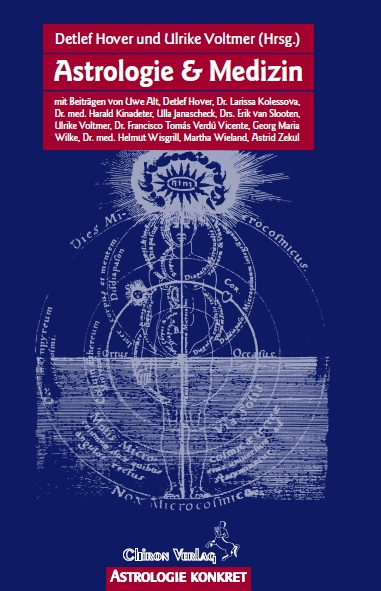
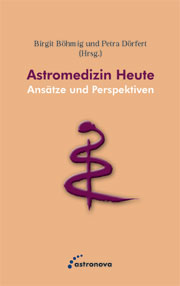
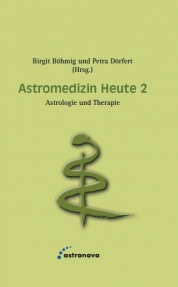


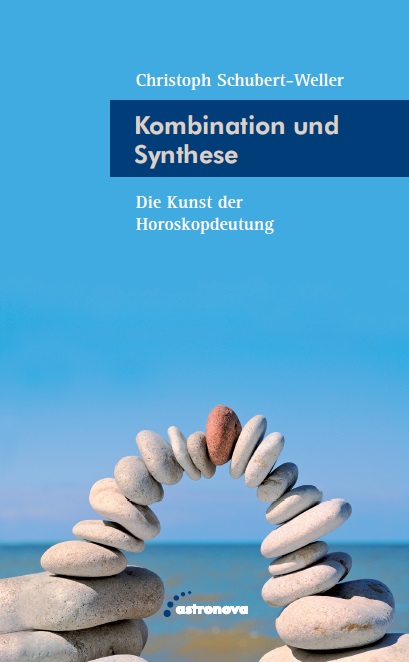
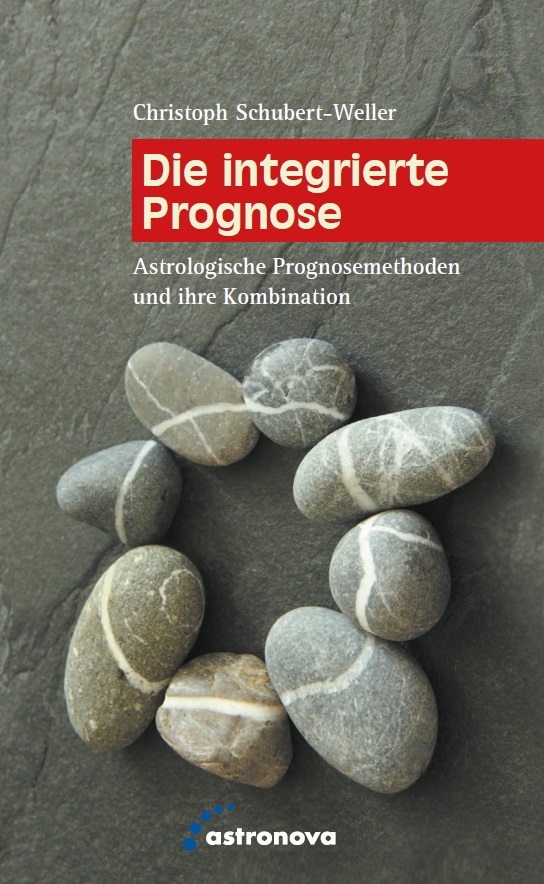




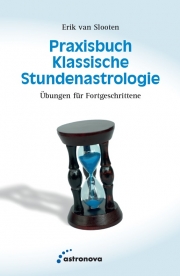









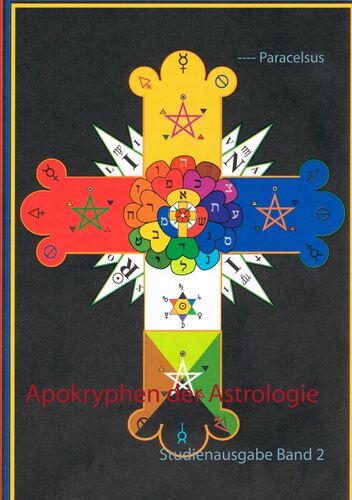
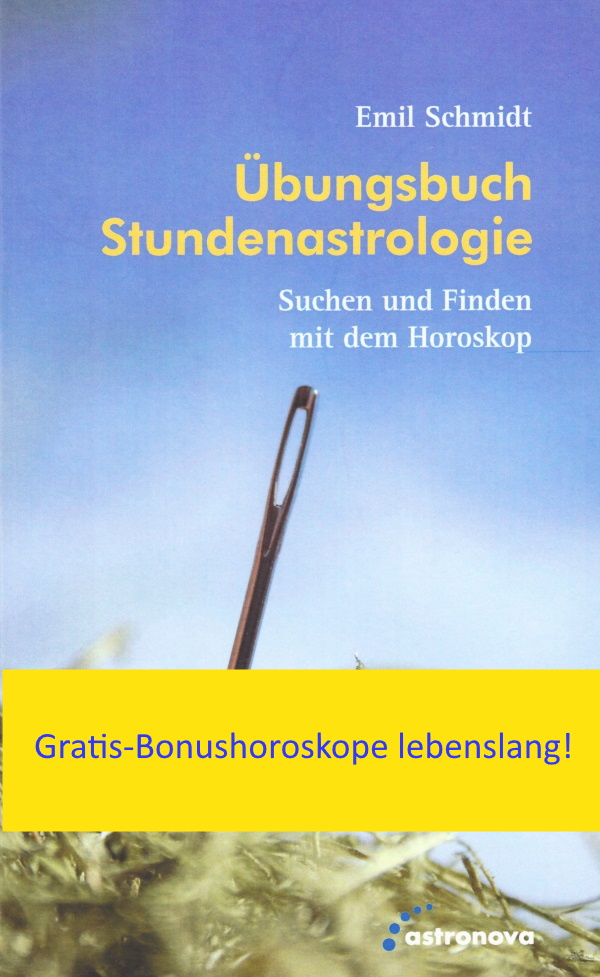




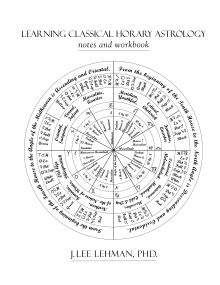

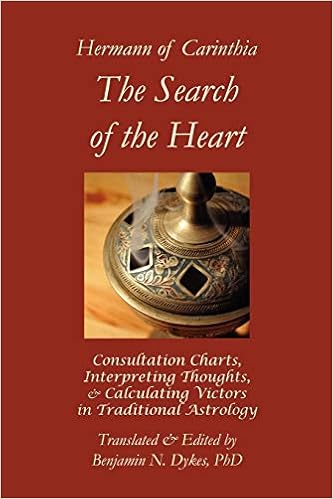



![Astrology for Initiates: Astrological Secrets of the Western Mystery Tradition (English Edition) von [Papus]](https://m.media-amazon.com/images/I/41TK9OnkkhL.jpg)




![Bonatti on Horary (English Edition) von [Guido Bonatti, Benjamin Dykes]](https://m.media-amazon.com/images/I/41mJzbi9+qL.jpg)














